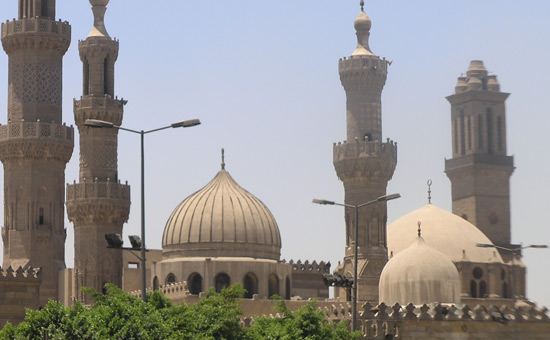Union Minority Affairs minister Mukhtar Abbas Naqvi announced this week that all Wakf properties in India would be geo-tagged and digitized. The plans are afoot to provide 100% funding to Wakf properties to develop educational institutions such as schools, colleges, IITs, polytechnics and, hospitals etc. A report of a committee to review wakf properties lease rule has been submitted to the Centre.
State Wakf Boards own more property in India than even Railways and after Defence is country’s largest landowners. It holds six lakh acres of land of $18 billion worth. There are no less than six lakh registered Wakfs in India. These lands are used for functioning/non-functioning mosques, darghas (toms or shrines of Muslim saints), khanqahas (building/space for Sufi brotherhood), maqbaras (tombs), ashoor-khanas (mourning place), kabristans (graveyards), idghas (space for Eid prayers), imam-baras (space for prayers and gatherings) etc.
Wakf (donation), as per legislation in India (Waqf Act 1995) is the “permanent dedication by any person, of any movable or immovable property for any purpose recognized by the Muslim law as pious, religious or charitable.” A property under Wakf can never again change hands by inheritance, sale or seizure and must be used for Muslim community’s welfare. (Article 370 puts the state of Jammu & Kashmir out of its purview.)
The reality is too different from the pious, stated goals. India Today did a massive sting operation two years ago where its team visited a number of Wakf properties whose caretakers (mutawallis) were willing to sell a part of the land. They either had forged permission from State Wakf Boards (yes, under stringent conditions you can sell Wakf property) or confessed that a sizeable amount of sale amount would go to State Wakf Boards as bribe. Outlook magazine, while quoting a few instances, termed Waqf land scams as the biggest in India’s history. Wakf mafia is a reality in today’s India.
Political parties are not above the water too. Central Bureau of Investigation (CBI) is probing an ex-chairman of the Delhi Wakf Board who was a Member of Legislative Assembly (MLA) of the Aam Aadmi Party. Delhi High Court too had come down hard on the Centre, Delhi government, Delhi Police and Delhi Wakf Board for letting Jamia Arabia Nizamia Welfare Education Society get away with misuse of the Wakf property. As against the potential of Rs 10,000 crores income out of Wakf properties every year, only Rs 150 crores annually is generated. Wakf properties in Delhi, Mumbai, Kolkata, Hyderabad, Chennai and Bangalore alone are worth about Rs 1.5 lakh crore and the estimation is on the lower side.
Asaf A. Fyzee in his book, Outlines of Muhammadan Law, dates back the origin of Wakfs to the life and times of Prophet Muhammad. It was an ingenuous way of securing a conquered property into one of inalienable ownership for perpetuity. Joseph Schacht, an international authority on Islamic law, said: “The Wakf has one of its roots in the contributions to the holy wars which (Prophet) Muhammad had incessantly demanded from his followers in Medina.”
In modern times though there is no Wakf institution in Turkey, Libya, Egypt, Sudan, Lebanon, Syria, Jordan and Iraq. No less than the Caliph of all Sunni Islam and the Ottoman emperor abolished the institution in 1917. The day after it got its independence, Tunisia abolished Wakfs in 1956. In 1830, the French government took over the Wakf in Algiers, and repeated the measure in Morocco. In Russia, centuries of practice of Wakf was ended soon after the revolution; lands were confiscated and became state property. (for reference, here).
Most of these measures against the Wakf were to free-up the enormous land under its control. In Turkey, in 1925, three-fourths of the arable land was under Wakf. One half of the plowable lands in Algiers was dedicated to Wakf by the end of the 19th century. In Tunisia, it was one-third; in Egypt, one-eighth of the cultivated soil. So much of land, often unused, was harmful to economic growth as indeed is the case in present-day India. (for reference, here).
In India too Wakfs have faced state’s censure though it happened only once and that too under the British rule in the 19th century. The four judges of Privy Council in London described the Wakf as “a perpetuity of the worst and most pernicious kind” and declared it to be invalid. But the Indian state since then has been in retreat. The Mussalman Wakf Validating Act, 1913 was an important saviour for Wakf. The Waqf Act of 1995 has cast it in stone. (for reference, here). The present dispensation in Uttar Pradesh had abolished both the Sunni and Shia Waqf Boards due to allegations of massive scams two years ago but presently it has been stayed by the Supreme Court.
In India, Wakfs dates back to the times of Sultanate of Delhi. S. Athar Husain and S. Khalid Rashid in their book “Wakf Laws and Administration in India” claim that Sultan Muizuddin Sam Ghouri dedicated two villages in favour of Jama Masjid in Multan. Over centuries, various such properties came under Wakf control.
Presently, there are 30 Wakf boards in 28 states/union territories in India. The states of Goa, Arunachal Pradesh, Mizoram, Nagaland, Sikkim and the Union Territory of Daman & Diu don’t have any wakf board. The Wakf Act 1995 is not applicable in Jammu & Kashmir.


